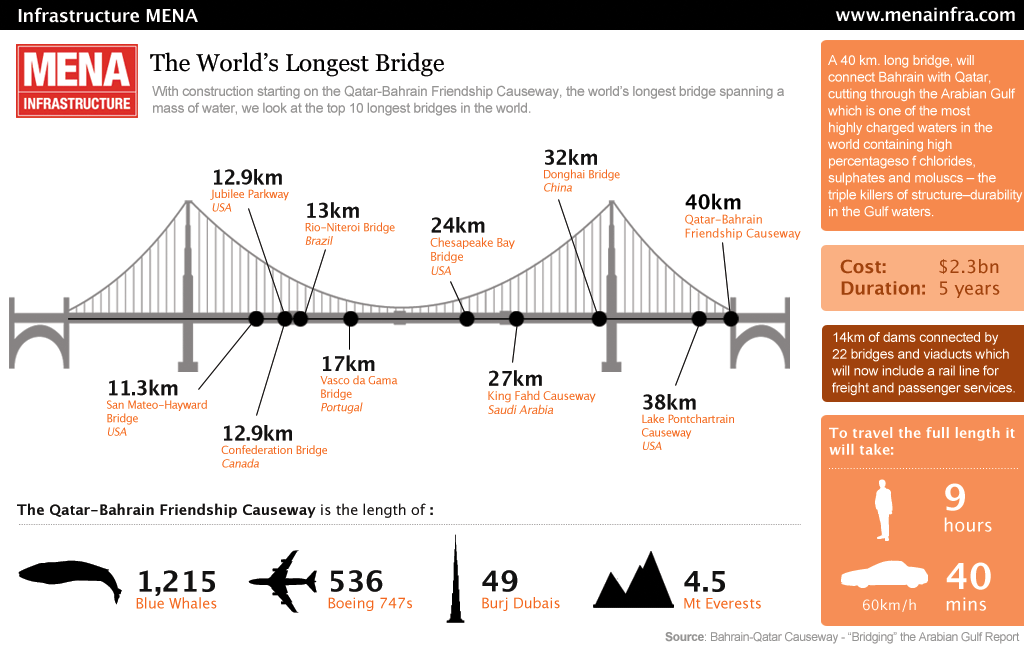Bahrain Economic Structure
Please note that we are not authorised to provide any investment advice. The content on this page is for information purposes only.
Bahrain’s economic success is partly a result of the government’s initiatives to diversify its economy. However, most of Bahrain’s economic growth over the past decade has in fact been the result of continuous development within the private sector.
Bahrain’s economic success is partly a result of the government’s initiatives to diversify its economy. However, most of Bahrain’s economic growth over the past decade has in fact been the result of continuous development within the private sector.
Government policies and structural reforms have been crucial to Bahrain’s success and in placing the country 10th in the world for freest economies (according to 2011 Economic Freedom Index). Bahrain’s overall score of 77.7 was 1.4 points higher than the previous year as the country made improvements in trade freedom, investment freedom, labor freedom, and freedom from corruption. Bahrain is the freest economy in the Middle East.
Table of Contents
Economic Geography
The Kingdom of Bahrain is an archipelago of 33 islands near the western shores of the Persian Gulf with its capital, Manama, residing on the Northeast tip of Bahrain Island; the largest island in the kingdom. Bahrain’s strategic location in the Middle East ensures good access to markets in the region. As an archipelago in the Persian Gulf, much of the Western world’s petroleum must transit through Bahrain in order to get to the open ocean.
Bahrain already possesses one of the most efficient and advanced transportation systems within the Middle East, however it intends to spend US$2.9 billion in upgrading its logistics infrastructure. Bahrain’s close proximity (a 40 minute drive via the King Fahd Causeway from the capital of Manama) to the region’s largest market in Saudi Arabia – and the impending Bahrain-Qatar Friendship Causeway puts Bahrain in prime position to become a central hub for trade.
Population and Labour Force
Bahrain’s population in 2010 was 1.234 million people, and experienced a growth rate of 1.292 percent. Within Bahrain’s population, 54 percent are non-nationals – 25.9 percent of the population are aged 14 years and below, 70.2 percent aged 15 to 64 years and 3.9 aged 65 years and older.
Bahrain possesses a relatively small but capable labour force with 44 percent of the 611,000 strong labour force being non-nationals. Due to Bahrain’s rapid expansion and diversification, the labour force grew significantly between 2007 and 2008 increasing by 24.15 percent and 27.46 percent respectively. Population growth in Bahrain has since levelled off to a rate of 4.85 percent in 2009 and 4.62 percent in 2010. Owing to its comparatively advanced education system and high literacy rates (83.6percent of the population as of 2001), Bahrain has also been able to produce highly educated and highly skilled workers.
2005 data by the IMF placed Bahrain’s unemployment rate at 15 percent. On the other hand, a 2010 article by the Gulf News, quoting Bahrain’s labour minister Majeed Al Alawi, stated Bahrain’s unemployment rate had fallen to 3.7 percent as of February 2010. In recent years, the amount of foreign workers in Bahrain has steadily declined due to reduced sponsorship for expatriate workers by the government. Increasing the cost of employing foreign labour placed more emphasis on hiring local Bahrainis.
According to the lastest available data from 2000, 54 percent of the labour force worked in the industry sector, 45 percent in services and 1 percent in agriculture.
Industry Sectors
Industries and services were the major contributors to Bahrain’s GDP in 2010; contributing 58 percent and 41.5percent respectively. Agriculture on the other hand was virtually insignificant, contributing only 0.5 percent to Bahrain’s GDP.
Bahrain’s current industries include:
- Petroleum processing and refining
- Aluminium smelting
- Iron pelletization
- Fertilizers
- Ship repair
- Islamic and offshore banking
- Insurance
- Tourism
Bahrain has geared itself towards economic diversification in order to capitalise on its strategic location within the region, as well as address numerous problems including lowering unemployment and the gradual decrease of their oil reserves. In the past 5 years, the volume of service exports has grown by over 40 percent while non-oil exports have tripled over the same period.
Many of Bahrain’s current industries have also gradually shifted from the public to private sector. In 2009, government services, including healthcare and education represented 14 percent of GDP; the third largest contributing sector to Bahrain’s GDP after finance and manufacturing.





